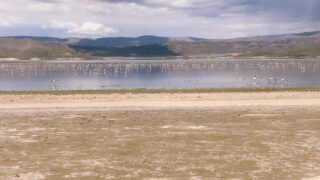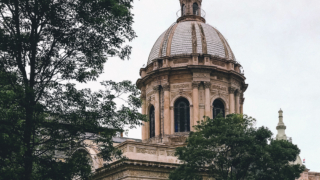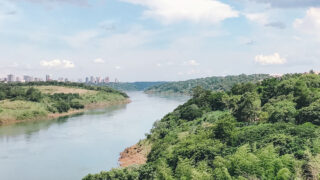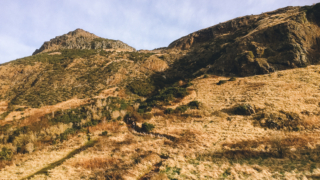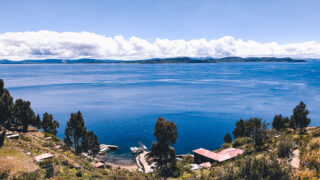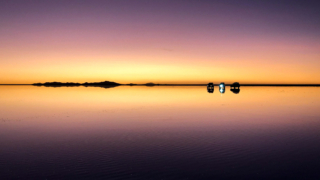Peru the only country to ever exceed my expectations. My idea of Peru was that of mountainous landscapes filled with llamas, a custom of eating guinea pig, and an assumption that it would be too touristic for my liking. Little did I know that there are so many underrated places in the astounding Peru. Sixty per cent of Peru is covered by the Amazon, and most of the population lives in the coastal desert area. The Peruvian people are welcoming, and friendships with locals can be formed easily. Here is where I learnt that Peruvian cuisine is exceptional, seeing someone walk their llama can become the norm, and Pisco gives you worse hangovers than any other alcohol. Although, maybe that’s just the case for me.
Although Peru is home to the most touristic place in South America, Machu Picchu, there are numerous unimaginable places to explore. The home of the Incas has beautiful beaches, great swell, an oasis in the middle of sand dunes, one of the longest zip-lines in the world, the largest flying bird – the giant Andean Condor, an Austrian-German colony in the jungle, salt pans not to be mistaken for the salt flats, Pisco Sours, and some of the highest-ranked restaurants in the world – surprised? I could go on and on, but I am certain you have already realised what a breath-taking country it is. Wondering how much time to spend in Peru, what to do, and what on earth Pisco Sours are? Read on and find out.
Post Contents
WHAT TO DO
Peru Highlights.

Do you only want to cover the highlights of Peru? Then head to, surprise, surprise; Cusco for Machu Picchu, Rainbow Mountains and ziplining; the countries capital Lima for colonial history, the white city Arequipa for baroque buildings and a hike through Colca Canyon, Puno for the floating islands of Lake Titicaca, and Iquitos for a visit to the Peruvian Amazon.
Adrenaline Junky Or Adventurous?
There are many adventurous things to do in Peru. Head to the Sacred Valley to stay in a lodge on the side of a mountain. Sounds adventurous? It is! Skylodge Adventure Suites are somewhat unusual and can only be reached by climbing.
If you would rather avoid dizzying heights, then travel to Máncora. This beach and party town is an unexpected paradise in the North of Peru and my personal favourite surfing spot in South America. Huaraz has many incredible hikes to glaciers and breath-taking turquoise lagoons to offer.

You don’t mind going out of your way to find adventure? Then head to Puerto Inca for a visit to a remote place with a steaming river. Don’t fall or you will get poached like my breakfast eggs. Travel to Huacachina to immerse yourself in gigantic dunes, sand buggy rides, and sandboarding.
Don’t Want To Be A Cliché Tourist And See Some Underrated Places In Peru?
There are many underrated places in Peru. Visit the country’s mysterious geoglyphs in Nazca, Paracas for desert explorations, Trujillo for ancient ruins, or Huancacho for reed watercraft and surfing.

More into nature and animals? Visit the Pampa Galeras National Park in the Lucanas province to see the cute cousin of the llama, the one and only vicuña. And if you want to go out of your way to avoid the beaten trek then head to Peru’s most underrated place, Pozuzo, an Austrian-German village in the jungle, and then tell me how to get there!
Are rock formations more your thing? The Huayllay National Sanctuary is the place for you. The National Reserve is a stone forest of geological formations.
Peruvian Cuisine.
Peru’s food should not be underestimated. It is home to some of the top restaurants in the world. Make sure to eat Japanese and Peruvian-Japanese fusion cuisine, it is delicious. Wondering why Peru has so much Japanese food? Peru and Japan have a long-standing history. Many Japanese citizens immigrated to Peru in the 20th century, shaping the Peruvian food as we know it today.
Although, guinea pig is the country’s official delicatessen, and can be found as ‘cuy’ on most restaurants’ menus. If you are a meat-eater it is worth a try. In case you find yourself in Peru in September, make sure not to miss the Mistura Culinary Festival.

Festivals.
If you find yourself in Cusco in June then make sure not to miss the ancient Inca festival Inti Raymi, it is an experience you will not forget. Puno hosts one of the largest festivals in South America the Fiesta de la Candelaria. If you want to immerse yourself in music, and elaborately costumed dancers then you should visit Lago Titicaca in February.
GOOD TO KNOW
Altitude.
Cusco, Puno and Arequipa are all in high altitude with elevation being between 2,335 m to 3,399 m. If you haven’t acclimatised already, ensure to calculate approximately three days into your itinerary to let your body adjust.

How Much Time To Spend In Peru.
I spent two months in Peru, but you can easily spend a lifetime here. Honestly, I love this country! I recommend visiting Peru for two weeks if you only want to cover the main attractions. A month is sufficient time to spend no longer than three to four days at any place, or two to three months if you don’t want to rush and you want to explore all of the underrated places in Peru.
Where To Enter Peru.
Peru can be entered from Copacabana or La Paz, Bolivia to Puno; from Guayaquil or Cuenca, Ecuador to Máncora, or Lima if you don’t mind long bus journeys. Peru to Chile and Peru to Colombia are extensive journeys if you want to avoid sleepy towns. You can take a bus from Arica, Chile to Tacna and continue North from there; or fly from Colombia to Iquitos.
Best Time To Visit The Underrated Places In Peru.
The recommended time of year is May to October during the dry season. Although there are many different eco-systems in Peru and the seasons differ per region. The North of Peru is good all year round, due to the proximity to the equator. Although, the swell is best from December to February.
I visited from December to January and the weather conditions in the North and West of Peru were great, but due to the rain, some treks were closed around Cusco. The official rain season is from November to April. In Cusco, the most rain can be expected from January to March. Prices during off-season are marginally lower, but it is not worth getting caught up in bad weather.

Safety.
Peru is safe as far as South American countries go. The same advice as for any other South American country stands ‘no dar papaya’, meaning do not keep items unattended, especially your phone. You should be fine taking your camera to most places if you avoid unsafe neighbourhoods.
Transport.
Peru is easy to travel by bus although not all towns have a bus terminal. If this is the case then it is worth researching bus times and companies prior to heading to the bus companies office/ ‘terminal’. I used Busbud for research and purchased the bus ticket at the bus companies ticket office. If you travel during peak times or to popular destinations I recommend buying a ticket the day prior or earlier in the day to secure a spot.
Places are well connected, and although busses tend to be cold. They are comfortable and relatively modern. Most buses feature charging ports for USB cables, provide blankets, and snacks. Night buses are safe but keep anything valuable on your body. The most popular bus company, although not always the cheapest, is Cruz del Sur.
If you feel uncomfortable taking local buses or want to meet fellow travellers, you can opt for the more expensive transport provided by Peru Hop. Their destinations are all the most popular tourist attractions, and discounts for accommodation and tours are offered.
Taxis are relatively cheap, although tuk-tuks are half the price. You can also take a scenic train to Machu Picchu.

ATMs.
My go-to bank was BCP. Its ATMs are prominent and you can withdraw up to S/ 700 without a fee.
Plugs.
Type A plugs (North American) are used throughout the country.
Visa.
European and US Nationals can enter Peru for 90 days, and Australian citizens for 183 days without a visa. Entry stamps will be granted upon arrival. Please check your immigration guidelines before entering the country. Airlines need you to be able to prove that you have either a bus or flight ticket out of the country.
Did I do a good job of sharing my love for all the underrated places in Peru? Also, did I mention that I love Pisco Sours? Still no clue what it is? Pisco is a brandy popular in Peru and Chile. Pisco Sours are made with syrup, lime juice, and egg white.
Now go ahead and explore! Try not to lose your towel.

